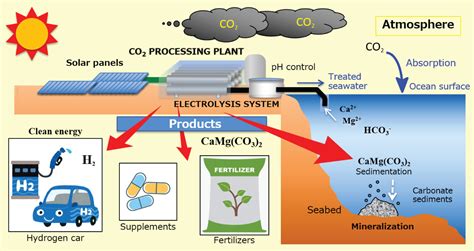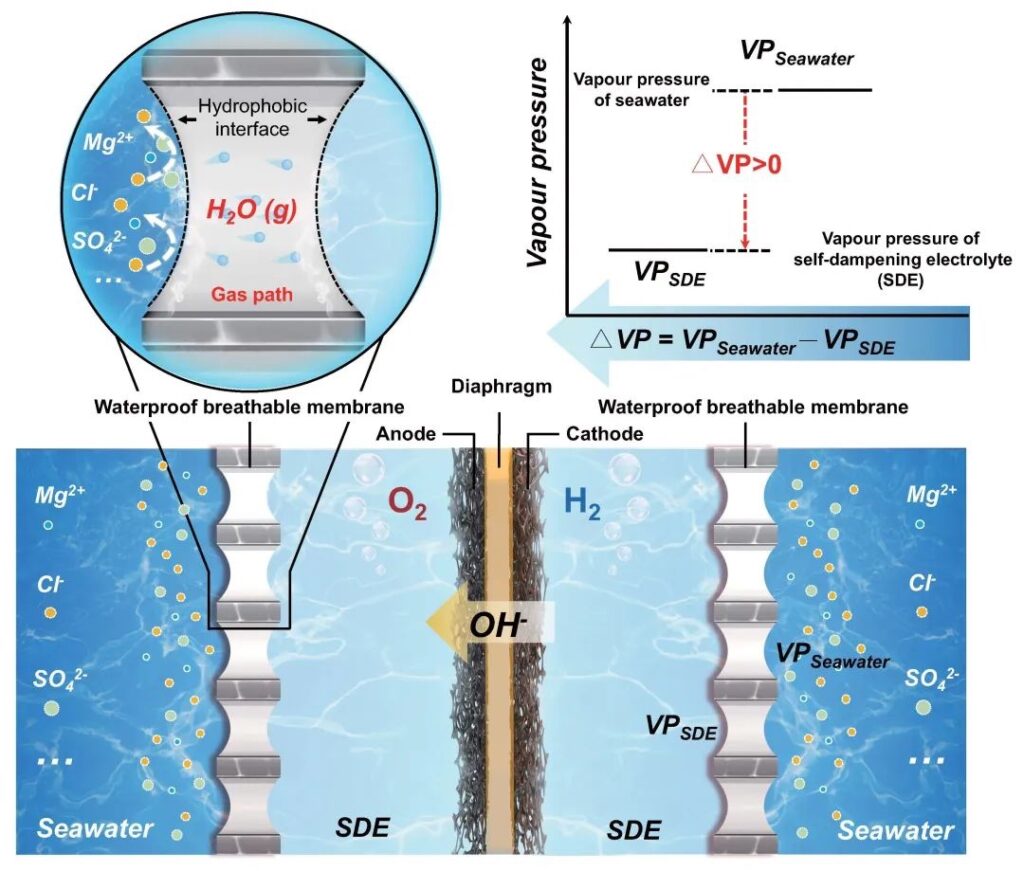The Cornell-led research team has developed a low-cost method to produce carbon-free “green” hydrogen by using solar-powered Seawater Electrolysis. The process also generates potable water as a byproduct, addressing the issue of high water consumption in traditional green hydrogen production. The researchers estimate that within 15 years, the technology could reduce the cost of green hydrogen production to $1 per kilogram, which is a crucial step in achieving net-zero emissions by 2050.
Sustainable Hydrogen Production
- The team developed a hybrid solar distillation-water electrolysis (HSD-WE) device that can produce 200 milliliters of hydrogen per hour with 12.6% energy efficiency directly from seawater under natural sunlight.
- The high cost of green hydrogen production has been a major challenge, as it typically requires large amounts of clean, deionized water, making it up to 10 times more expensive than regular hydrogen.
- The team’s innovation uses seawater and solar energy as abundant and free resources to address this challenge.

Integrated Water Desalination and Hydrogen Production
- The device harnesses the waste heat from photovoltaic cells to evaporate seawater, leaving behind the salt.
- The desalinated vapor is then condensed into clean water, which is used in an electrolyzer to split the water molecules into hydrogen and oxygen.
- This highly integrated design couples the desalination and electrolysis processes, allowing the production of both clean water and green hydrogen.
Cost Reduction and Potential Applications
- The researchers estimate that within 15 years, the technology could reduce the cost of green hydrogen production to $1 per kilogram, a significant step towards achieving net-zero emissions by 2050.
- The technology also has the potential to be incorporated into solar farms to improve the efficiency and lifespan of photovoltaic panels by using the waste heat for water desalination.
- The goal is to develop a cost-effective solution that can enable large-scale adoption of green hydrogen, while also addressing the global water scarcity issue.
